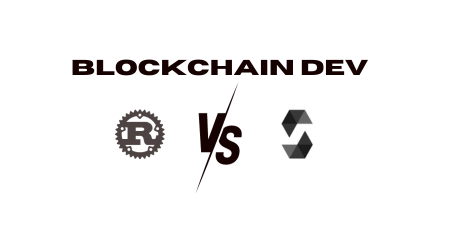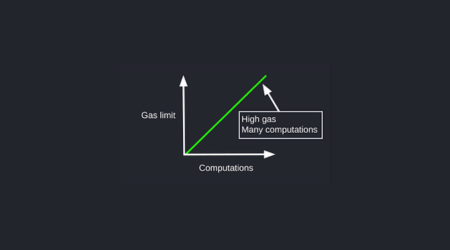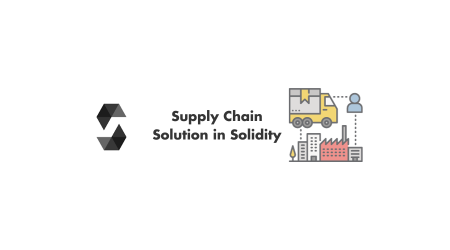Are you ready to dive into the world of blockchain development?
In this article, we will take you on a journey comparing the powerhouses of Rust and Solidity. These two languages are like the gears that drive the blockchain engine, each with its own unique strengths and weaknesses.
By exploring their performance, syntax, security, and community support, you’ll gain a deeper understanding of which language best suits your needs.
So buckle up and get ready for an enlightening ride!
1. Key Takeaways
- Solidity prioritizes performance and efficiency in blockchain development and is known for its scalability and gas optimization capabilities.
- Rust has strong static typing and a powerful error handling mechanism, making it a robust language for blockchain development.
- Choosing the right tooling and development environment, such as Visual Studio Code and Atom, improves efficiency in blockchain development.
- Both Rust and Solidity offer debugging and testing tools, which are crucial for building robust and reliable blockchain applications.
2. Performance and Efficiency
If you’re looking for a blockchain development language that prioritizes performance and efficiency, you should consider Solidity over Rust.
Solidity is known for its scalability and gas optimization capabilities, making it an ideal choice for building high-performance decentralized applications. With Solidity, you can ensure that your smart contracts execute efficiently and consume minimal resources on the blockchain.
Now let’s delve into the syntax and language features of Solidity that further enhance its capabilities for blockchain development.
3. Syntax and Language Features
The syntax and language features of Rust and Solidity differ significantly. Rust is known for its strong static typing, which helps catch errors at compile-time. It also has a powerful error handling mechanism through the use of Result and Option types.
On the other hand, Solidity is a statically typed language designed specifically for smart contracts on the Ethereum platform. It has unique features for handling the complexities of blockchain development, such as the ability to define and execute transactions and manage contract state.
| Rust | Solidity |
|---|---|
| Strong static typing | Specifically designed for smart contracts |
| Result and Option types for error handling | Transaction execution and contract state management |
| Concurrency and parallelism capabilities | Not focused on concurrency and parallelism |
Moving forward to the section on ‘tooling and development environment’, the choice of programming language plays a crucial role in determining the available tools and resources for developers.
4. Tooling and Development Environment
When it comes to tooling and development environment for blockchain development, there are three key points to consider.
First, IDEs and Editors provide a comprehensive and user-friendly interface for writing code. They offer features like syntax highlighting, code completion, and debugging capabilities. This makes it easier for developers to write and manage their code efficiently.
Second, Language Support and Plugins enhance the capabilities of the development environment. They offer additional features and integrations that can streamline the development process. For example, plugins can provide support for specific blockchain platforms or frameworks, making it easier to develop applications for those platforms.
Lastly, Debugging and Testing Tools are crucial for identifying and fixing errors in the code. They help developers track down and resolve issues, ensuring a smooth and efficient development process. These tools can include features like breakpoints, step-through debugging, and unit testing frameworks.
Considering these three points when choosing tooling and development environment for blockchain development can greatly improve the efficiency and effectiveness of the development process.
I. IDEs and Editors
You should try using Visual Studio Code or Atom as your IDE for blockchain development. These powerful editors offer features such as code highlighting, collaboration tools, and version control integration.
With Visual Studio Code or Atom, you can easily write, debug, and test your blockchain code, ensuring its reliability and efficiency.
Moving forward, let’s explore the next aspect of blockchain development: language support and plugins.
II. Language Support and Plugins
To enhance your coding experience for blockchain development, explore the variety of language support and plugins available in IDEs like Visual Studio Code or Atom.
These tools provide seamless integration and language interoperability, allowing you to write code in multiple languages such as Rust or Solidity.
With plugins specifically designed for smart contract deployment, you can easily compile, test, and deploy your contracts with ease.
Now, let’s dive into the next section and explore the essential debugging and testing tools.
III. Debugging and Testing Tools
Now that you understand the language support and plugins available for Rust and Solidity, let’s dive into the world of debugging and testing tools.
Automated testing plays a crucial role in ensuring the reliability and correctness of blockchain applications. Both Rust and Solidity offer various debugging techniques and tools to aid developers in identifying and resolving issues efficiently.
However, it’s also important to analyze the security and vulnerability aspects, which we’ll explore in the next section.
5. Security and Vulnerability Analysis
When it comes to security and vulnerability analysis, it’s important to thoroughly assess the strengths and weaknesses of both Rust and Solidity in blockchain development. Here are four key factors to consider:
- Risk Assessment: Evaluate the potential risks associated with using Rust or Solidity for your blockchain project.
- Code Review: Conduct a comprehensive review of the code written in Rust or Solidity to identify any security vulnerabilities.
- Security Testing: Perform rigorous testing to ensure that the blockchain application is resistant to attacks and exploits.
- Vulnerability Mitigation: Implement measures to mitigate any vulnerabilities identified during the analysis and testing phase.
Understanding the security and vulnerability analysis process is crucial for building secure and reliable blockchain applications.
Now, let’s explore the next section about community and ecosystem support.
6. Community and Ecosystem Support
When considering the community and ecosystem support for blockchain development, it’s essential to examine the availability of developer resources and the levels of community engagement.
The availability of developer resources directly impacts the ease and efficiency of building blockchain applications.
Additionally, community engagement levels indicate the level of active participation and collaboration within the blockchain community, which can significantly contribute to the growth and success of a project.
I. Developer Resources Availability
It’s important to note the availability of developer resources when comparing Rust and Solidity for blockchain development. Here are four key reasons why developer support and learning curve play a crucial role in your decision-making process:
- Extensive documentation and tutorials make it easier to grasp Solidity’s syntax and concepts.
- Rust’s strong typing system and error handling mechanisms provide a robust development environment.
- Solidity’s large online community offers active forums and support channels for problem-solving.
- Rust’s well-established libraries and frameworks streamline blockchain development.
Considering the availability of developer resources, let’s now delve into the next section: community engagement levels.
II. Community Engagement Levels
Now, let’s delve into the community engagement levels for Rust and Solidity in the blockchain development space.
Both languages have vibrant communities that provide valuable resources and support. Developer forums are an excellent platform for sharing ideas, asking questions, and receiving guidance.
Additionally, hackathons and coding competitions are regularly organized, allowing developers to showcase their skills and learn from others.
Understanding the community engagement levels is crucial for exploring the use cases and adoption in blockchain development.
7. Use Cases and Adoption in Blockchain Development
Blockchain development has seen significant adoption in various industries, highlighting the diverse use cases for both Rust and Solidity. When it comes to blockchain interoperability and scalability solutions, these languages offer distinct advantages.
Here are four reasons why they are crucial in the world of blockchain development:
- Efficient and secure interoperability: Rust and Solidity enable seamless communication between different blockchain networks, ensuring smooth data exchange and enhancing collaboration.
- Scalability: Both languages provide scalable solutions, allowing blockchain applications to handle increasing transaction volumes without compromising performance or security.
- Robust smart contract development: Solidity’s extensive features and Rust’s strong type system empower developers to build robust and secure smart contracts, ensuring reliability and trust in blockchain applications.
- Community support and adoption: Rust and Solidity have vibrant communities and are widely adopted in the blockchain ecosystem, offering developers access to a wealth of resources, libraries, and tools to expedite their development process.




